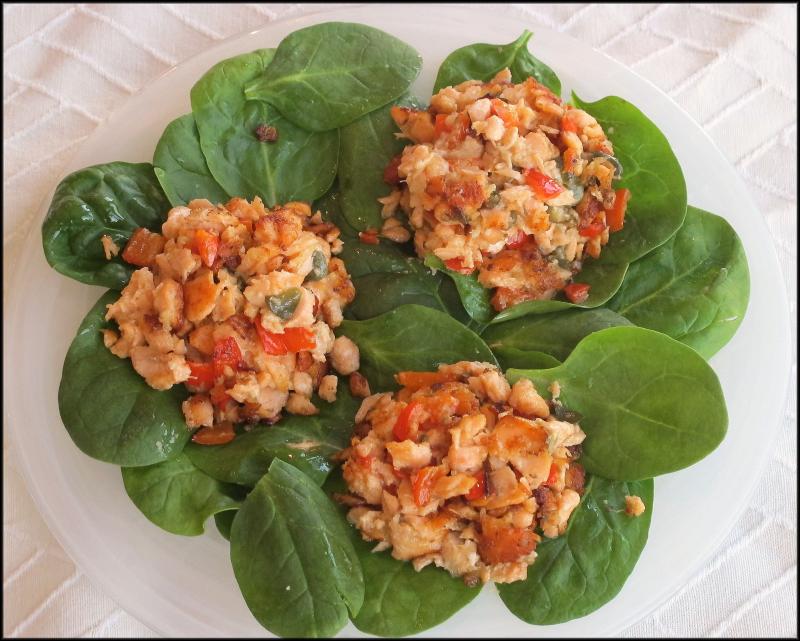Share:
Help for your menu on meatless Fridays
March 6, 2020
Last week was the start of the 40-day period of Lent. From the Anglo-Saxon word lengten for “lengthen,” the name refers to the time of year and the arrival of longer days in early spring. Lent, which runs from Ash Wednesday until Easter Sunday, is observed by Catholics and some Protestant denominations who treat this as a time for fasting, repentance and moderation.
When we were children, just before the start of Lent, our parents encouraged my brothers and me to give up something we enjoyed as a symbolic gesture of self-denial. As kids, we schemed to find the least burdensome way to fulfill this obligation. I remember forgoing my favorite breakfast cereal or giving up nightly episodes of a specific television program.
The one thing about Lent that was much more difficult than not watching Batman each afternoon was not eating meat on Fridays. We struggled through fish sticks baked straight from the freezer or slimy tuna noodle casserole made with cream of something soup. Forty days seemed so very long when you counted how many Fridays you would endure.
As an adult, I heard the urban legend that claimed a medieval pope instituted the rule of “fish on Fridays” as a way to help the regional fishermen. However, the practice of serving fish for feast days began in pre-Christian times. But, once the Catholic religious calendar named various holy days requiring meatless meals, the fishing industry did grow and prosper.
Later on, King Henry VIII caused an unintended consequence for fishermen when he broke away from the Roman Catholic Church to divorce Catherine of Aragon and marry Anne Boleyn. Naming himself head of the new Church of England, Henry created a disdain for fish by allowing followers of the Anglican faith more leeway in fasting rules.
And, as with any supply-and-demand situation, this caused a serious problem for the fishing industry. When Henry’s son, Edward VI, ascended the throne in the 16th century, he ruled that fast days be reinstated, specifically for the benefit of fishermen who had experienced a significant decline in demand for the “popish” food.
Today, you can choose from a wide range of fish in specialty fish markets as well as the grocery store. More and more vendors have become diligent about identifying the country of origin for their selections, which helps decision-making. The one place where the source of the fish remains hidden is in most canned tuna and salmon.
I’ve recently discovered two brands that deliver excellent taste along with sustainable practices. Both companies avoid using preservatives or other additives beyond water and (sometimes) salt. Wild Planet advertises that its tuna is pole and line caught in the northern Pacific or coastal New Zealand. The label is easy to read: “Ingredients: Albacore tuna.”
Although pricier than the nearby cans of Bumblebee or Starkist, the quality is worth it for another impressive brand, Safe Catch. It advertises testing every individual tuna for mercury levels, rejecting any that don’t fall below the threshold of .38 parts per million (a stricter standard than the FDA). Its canned salmon is similarly authenticated and is well worth the cost.
To help with your menu planning for meatless Fridays, I’ve included a recipe for the salmon cakes in the photo as well as a tuna salad that incorporates white beans and replaces mayonnaise with a lemony olive oil dressing. Of course, you can always use fresh fish if you prefer.
Salmon Cakes
1 egg
2 5-oz cans pink salmon
1 T flour
1 T bread crumbs
1/3 C minced red bell pepper
2 T mayonnaise
1 T capers
1 minced shallot
1 t Dijon mustard
1 T lemon juice
1 T minced parsley
salt & pepper, to taste
In a large bowl, whisk the egg until smooth. Add salmon and break into chunks with a fork. Sprinkle with flour and bread crumbs; stir to combine. Add remaining ingredients and mix well. Mold with your hands into small patties. To cook, either sauté in melted butter, turning once, until golden brown on both sides, or arrange in a single layer on a baking pan and broil 2 minutes per side. Serve on a bun with tartar sauce or on a bed of baby spinach.
White Bean & Tuna Salad
1/3 C diced red onion
zest & juice of 1 lemon
15-oz can cannellini beans
1 T olive oil
5-oz can tuna
2 T chopped parsley
1/4 t red pepper flakes
salt & pepper, to taste
arugula
In a serving bowl, toss together onion, lemon zest and juice. Drain and rinse the beans; add them to the bowl. Stir in olive oil and tuna, breaking up any large chunks with a fork. Add parsley, red pepper flakes, salt and pepper; toss gently to combine. Chill for at least 30 minutes before serving on a bed of arugula.
























































